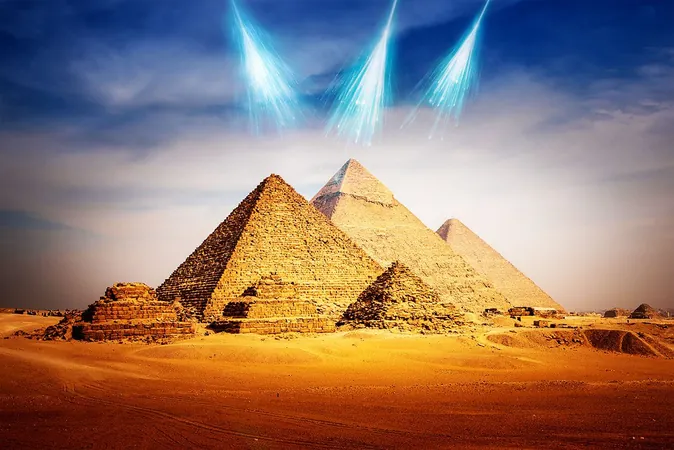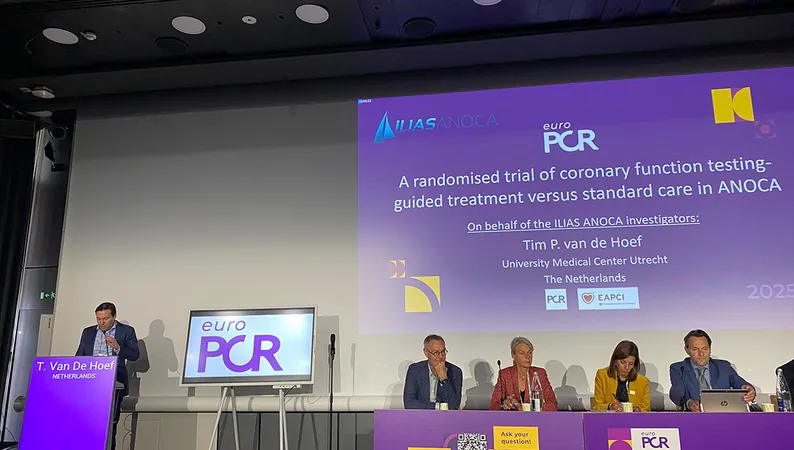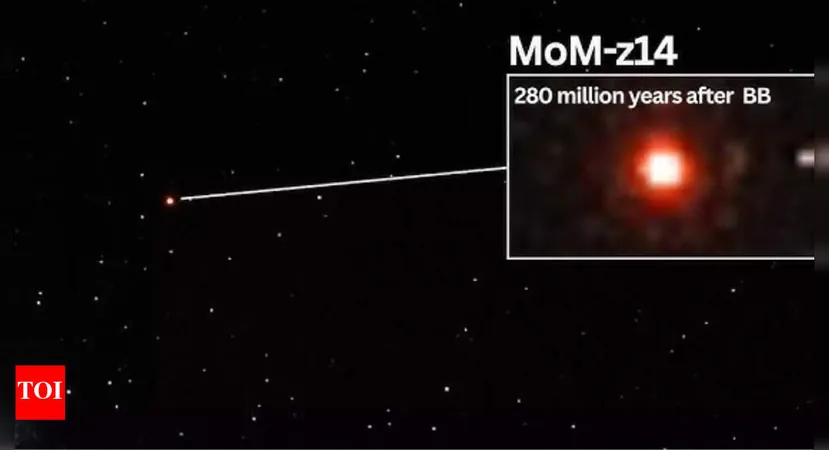
Cosmic Rays: Uncovering Mysteries from the Depths of Space to Ancient Pyramids!
2025-01-26
Author: Siti
Introduction to Cosmic Rays
Cosmic rays are fascinating high-energy particles racing through the cosmos, accelerated by explosive events such as coronal mass ejections from the Sun or dazzling supernovae in our galaxy.
Interaction with Earth's Atmosphere
When these cosmic rays collide with Earth's atmosphere, they interact with gas atoms, resulting in a dazzling cascade of various particles that propagate through the atmosphere. This gives rise to a cone-shaped cascade that eventually produces what we know as cosmic radiation. While this radiation poses risks to astronauts in space, it also presents hazards for airline passengers and crew, particularly on high-altitude flights over the polar regions, where the Earth's magnetic shield is weakest.
Secondary Particles and Their Significance
While many of these secondary particles are absorbed by our atmosphere, some, like muons, neutrons, and gamma rays, make their way to the surface, generating significant interest in how cosmic rays behave and traverse the atmosphere.
The Earth Cosmic Ray Shower Simulation Package
A new simulation package, the Earth Cosmic Ray Shower (ECRS), has been developed by Olesya Sarajlic and Xiaochun He from the Department of Physics and Astronomy at Georgia State University. This innovative software provides a more flexible and comprehensive modeling tool for researchers compared to older versions. Based on Geant4, a particle physics platform from CERN, ECRS allows for simulations that can analyze cosmic ray propagation at varying altitudes, latitudes, and consider changes in atmospheric conditions and the Earth's magnetic field.
Practical Applications of Cosmic Rays
Interestingly, the application of cosmic rays goes beyond academic interest; they have powerful practical uses. One intriguing application is muon tomography, which allows us to see through considerable barriers, much like X-rays do in medical imaging. However, where X-rays can be blocked by just a few centimeters of metal or rock, muons can penetrate several meters, providing a powerful tool for exploration and security.
Muon Tomography and Historical Discoveries
In fact, muon tomography was famously used in 2017 to investigate the inner structure of the Great Pyramid of Giza, leading to the groundbreaking discovery of a large, previously unknown cavity above the Grand Gallery. This technology promises broader applications, potentially identifying illicit uranium transportation in shipping containers or aiding in safe inspections of damaged nuclear reactors, such as those at Fukushima, Japan.
Conclusion and Future Outlook
With the latest advancements from Sarajlic and He, the potential applications of cosmic rays could be expanded, propelling us towards greater discoveries, whether that be unlocking ancient secrets or ensuring global safety. Stay tuned, as researchers continue to explore the cosmos and unearth both scientific and historical wonders!



 Brasil (PT)
Brasil (PT)
 Canada (EN)
Canada (EN)
 Chile (ES)
Chile (ES)
 Česko (CS)
Česko (CS)
 대한민국 (KO)
대한민국 (KO)
 España (ES)
España (ES)
 France (FR)
France (FR)
 Hong Kong (EN)
Hong Kong (EN)
 Italia (IT)
Italia (IT)
 日本 (JA)
日本 (JA)
 Magyarország (HU)
Magyarország (HU)
 Norge (NO)
Norge (NO)
 Polska (PL)
Polska (PL)
 Schweiz (DE)
Schweiz (DE)
 Singapore (EN)
Singapore (EN)
 Sverige (SV)
Sverige (SV)
 Suomi (FI)
Suomi (FI)
 Türkiye (TR)
Türkiye (TR)
 الإمارات العربية المتحدة (AR)
الإمارات العربية المتحدة (AR)